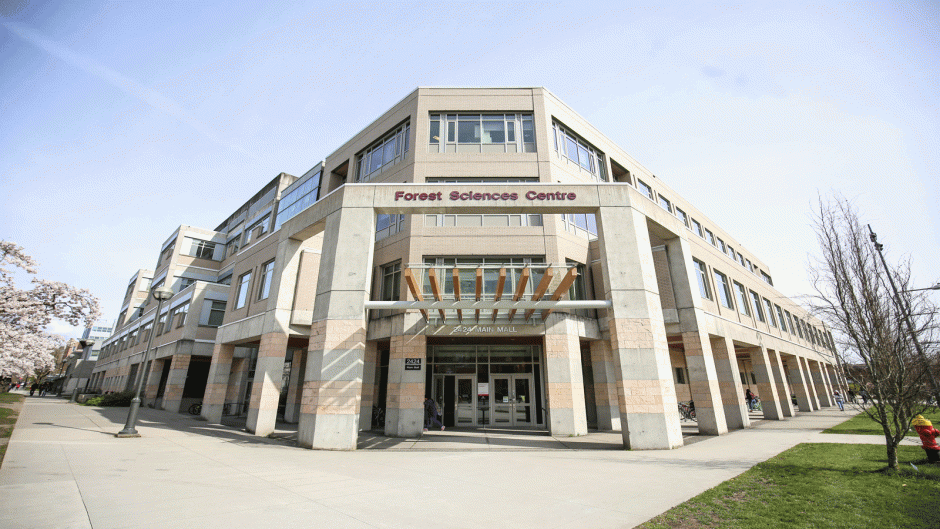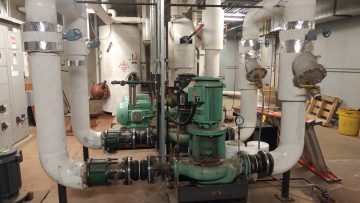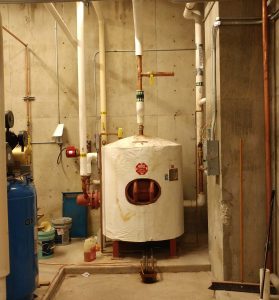
The Forest Sciences Centre is a 27,000 m² lab building built in 1998. The building consists of lab space, office space and classrooms and lecture halls. The building is one of the top 10 thermal energy consumers on campus – with a thermal EUI of 730 kWh/m²/yr!
Energy & Water Services conducted a building controls deep dive in 2017 to try and determine why the building was consuming so much thermal energy compared to it’s peers. From the results of this investigation, a number of energy conservation opportunities emerged including installing VSDs on the main heating water pumps, implementing a VAV nighttime setback, and retrofitting the domestic water heating systems.
Overall, these measures are expected to save 130 MWh/yr of electricity and 2000 GJ of thermal energy. The details of these individual retrofits are given below.
VAV Nighttime Setback
Originally, the central block of the building was designed as 4 levels of labs, requiring high levels of ventilation 24/7. However, since the construction of the building, many of these zones have been converted to classrooms and offices, which do not require the same level of ventilation. Significant fan energy savings were identified by closing the VAV dampers in these zones overnight.
When determining what time to schedule the overnight ventilation shut-down, occupancy data based on WiFi signals was consulted – data available from a previous EWS project. WiFi data was analyzed in Tableau visual analytics software to find an average time when spaces are vacated at night.
By shutting off ventilation to the spaces identified, the central fan was able to be reduced by 4600 L/s overnight. Over the course of a year, this project is expected to save ~30MWh of electrical energy and 1000 GJ of thermal energy with a combined savings exceeding $10,000/yr.

Variable Speed Drive Installation
Through the building deep dive, controls, and site investigation, EWS found that building air handling unit coils were passing, this was in part due oversized heating water pumps forcing the AHU valves open. In 2018, EWS completed a project where variable speed drives were installed on the main heating water circulation pumps. These two 25 HP pumps serve the Air Handling Units and general building heating system and now control to a reduced speed based on the actual pressure requirements of the system and demand from the downstream heating units.
This measure is expected to save 98 MWh of electricity in the building, reduce wear and tear on the building heating pumps increasing their expected lifetime, allow for better thermal control of spaces, and increase the amount of heat reclaimed from the lab exhaust fans to the air handling units.


Domestic Hot Water Retrofit
Forestry Sciences domestic water system is currently served by two immersion coils from the building’s heating water loop. Due to the high temperature requirements of domestic water, the building heating system is unable to be reset lower during the summer and shoulder seasons when high temperature heat isn’t necessarily needed. This year round, high temperature demand, adversely affects the campus district energy system, by driving up the supply water temperature of that system as well. To fix this issue, Energy & Water Services developed a project to install two electric domestic water tanks that will be used to supplement heat from immersion tanks, allowing a reset of the main building water to temperatures adequate for space heating. The project is expected to be complete in 2019.
